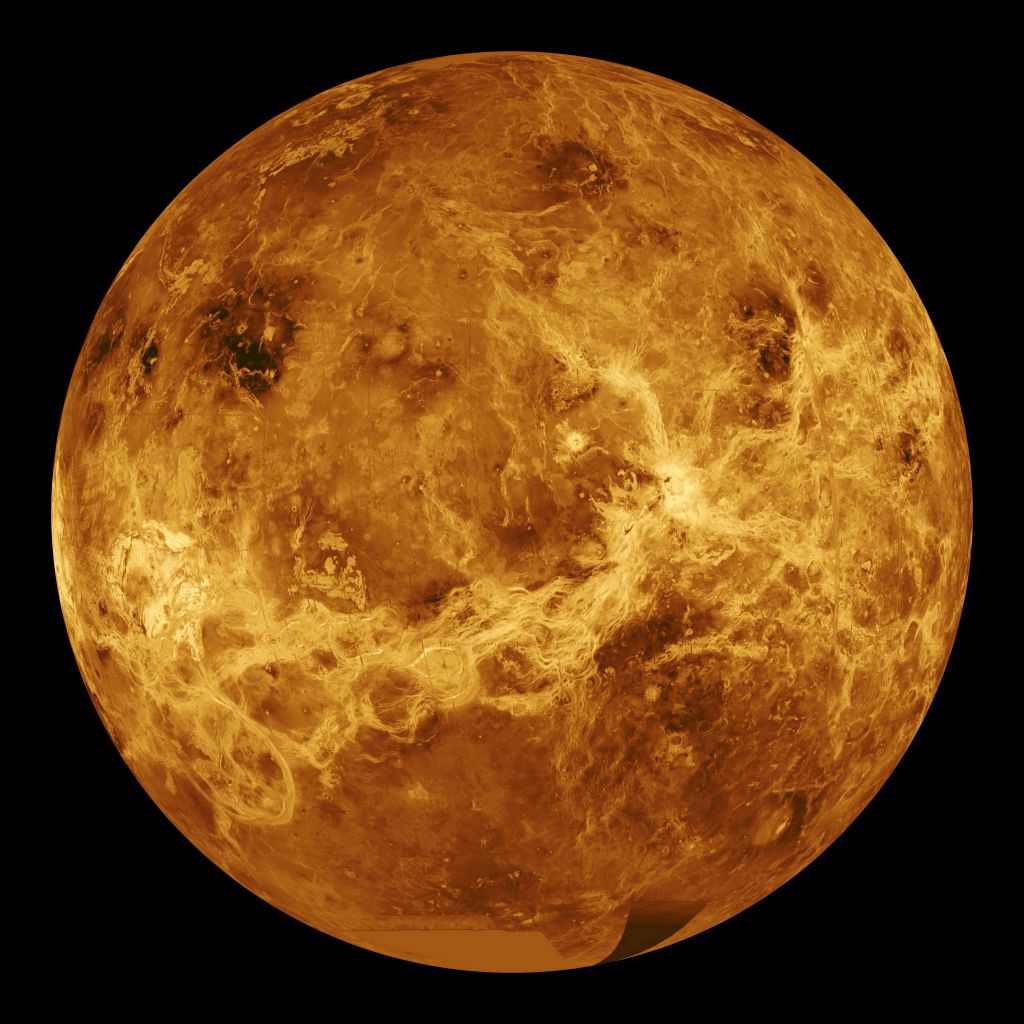Venus and Earth have many similarities. Both are terrestrial planets, meaning that they are composed predominately of metal and silicate rock, which is differentiated between a metal core and a silicate mantle and crust. Both also orbit the Sun within its habitable zone (aka. “Goldilocks Zone“). Hence why Venus and Earth are often called “sister planets”.
However, Venus is also starkly different from Earth in a number of ways. It’s atmosphere, which is composed primarily of carbon dioxide and small amounts of nitrogen, is 92 times as dense as Earth’s. It is also the hottest planet in the Solar System, with temperatures hot enough to melt lead! And on top of all that, a year on Venus is much different than a year on Earth.
Orbital Period:
Venus orbits the Sun at an average distance of about 0.72 AU (108,000,000 km/67,000,000 mi) with almost no eccentricity. In fact, with its farthest orbit (aphelion) of 0.728 AU (108,939,000 km) and closest orbit (perihelion) of 0.718 AU (107,477,000 km), it has the most circular orbit of any planet in the Solar System.

The planet’s orbital period is 224.65 days, which means that a year on Venus is 61.5% as long as a year on Earth. Unlike most other planets in the Solar System, which rotate on their axes in an counter-clockwise direction, Venus rotates clockwise (called “retrograde” rotation). It also rotates very slowly, taking 243 Earth days to complete a single rotation.
Sidereal vs. Solar Day:
While a year on Venus lasts the equivalent of 224.65 Earth days, it only lasts the equivalent 1.92 days on Venus. This is due to the fact that Venus rotates quick slowly and in the opposite direction of its orbit. Because of this, a Solar Day – the time it takes for the Sun to rise, set, and return to the same place in the sky – takes 116.75 Earth days.
This means, in effect, that a single day on Venus lasts over half a year. In other words, in the space of just over a single Venusian year, the Sun will appear to have circled the heavens twice. In addition, to someone standing on the planet’s surface, the Sun would appear to rise in the west and set in the east.
Variations:
Because of its dense atmosphere and its highly circular rotation, Venus experiences very little in the way of temperature variations during the course of a year. Similarly, its axial tilt of 2.64° (compared to Earth’s 23.44°) is the second-lowest in the Solar System, behind Mercury’s extremely low tilt of 0.03.
This means that there is virtually no variation in Venus’ surface temperature between day and night, or the equator and the poles. All year long, the mean surface temperature of Venus is a scorching 735 K (462 °C/863.6 °F), with the only variations occurring as a result of elevation.
Yes, Venus is a truly hellish place. And unfortunately, that’s a year-round phenomena! The days are extremely hot, the nights extremely hot, and a day lasts over half as long as a year. So if you’re planning on vacationing somewhere, might we recommend somewhere a little less sunny and balmy?
We’ve written several articles about years on other planets here at Universe Today. Here’s How Long is a Year on the Other Planets?, Which Planet has the Longest Day?, How Long is a Year on Mercury?, How Long is a Year on Earth?, How Long is a Year on Mars?, How Long is a Year on Jupiter?, How Long is a Year on Saturn?, How Long is a Year on Uranus?, How Long is a Year on Neptune?, How Long is a Year on Pluto?
If you’d like more info on Venus, check out Hubblesite’s News Releases about Venus, and here’s a link to NASA’s Solar System Exploration Guide on Venus.
We’ve also recorded an episode of Astronomy Cast all about Venus. Listen here, Episode 50: Venus.
Sources:

